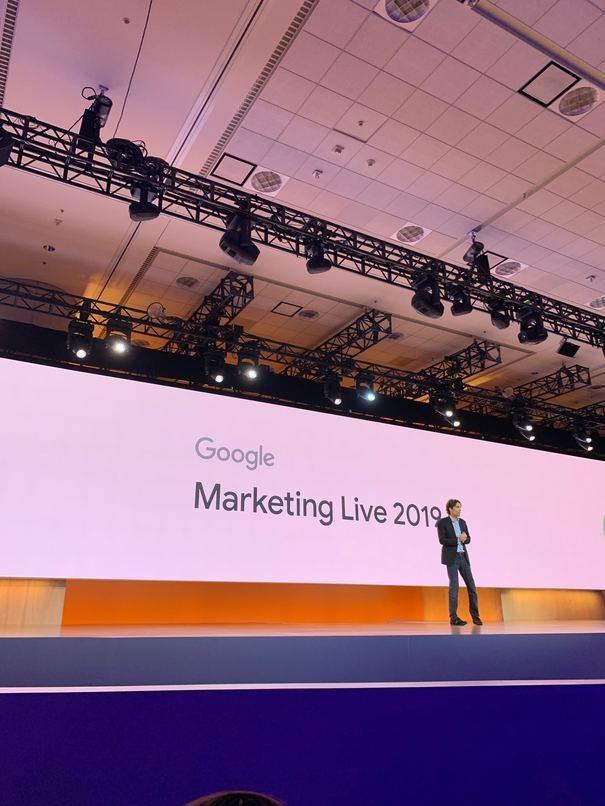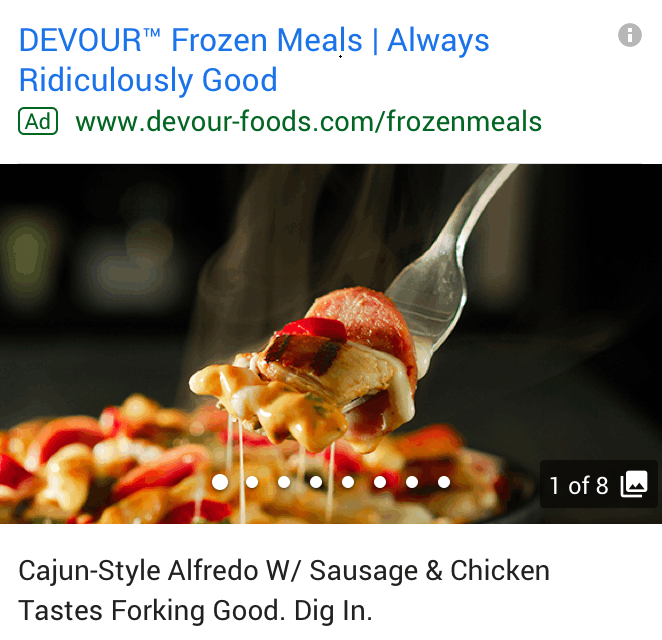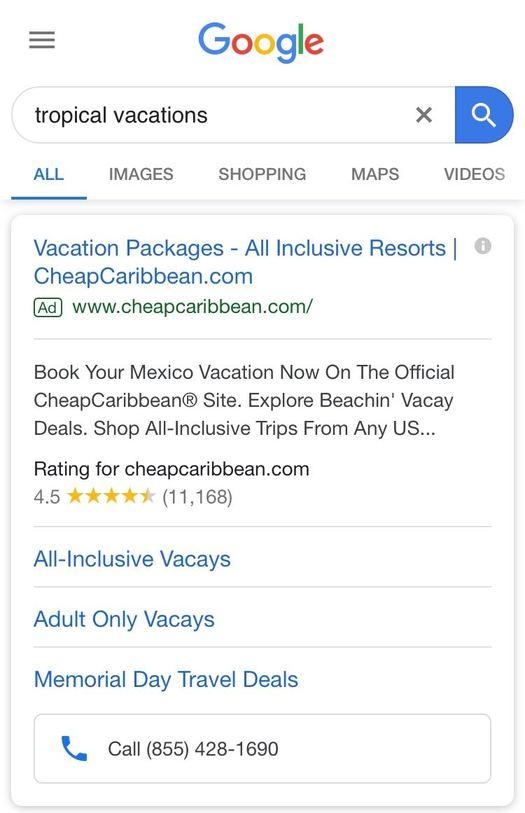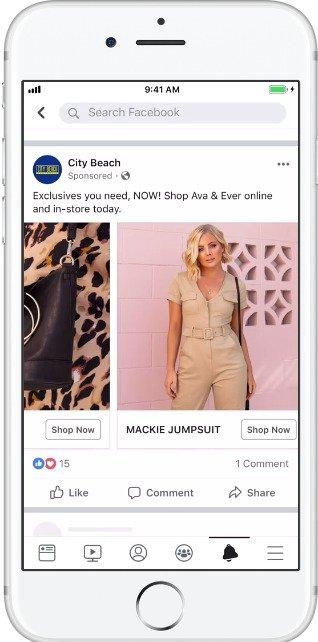Google’s NEW Gallery Ads: Everything You Need to Know
— May 24, 2019
Pop quiz, y’all: Which Google Ads network enables you to build your brand with compelling visual imagery—search or display?
Trick question! Although the Display Network is generally considered the hub of visual-based advertising in the Google Ads universe—I’m conveniently disregarding Shopping for the moment—this year’s Google Marketing Live keynote included the announcement of gallery ads.

Whether you’re aiming to drive sales or generate leads, gallery ads—by combining the intent of search with the creative of display—are poised to deliver some serious returns for your business once they fully roll out later this year.
So let’s dive deeper. By the end of this blog post, you’ll know:
- What gallery ads are
- What they’re designed to accomplish
- Who can benefit from using them
- Why you should be excited about them
What are gallery ads?
Introduced by Google’s own Sissie Hsiao, VP of Product Management in the Mobile App Advertising department, gallery ads are interactive ads that sit at the top of the mobile SERP. Underneath a standard text headline and a display URL, they feature swipeable image carousels—much like the ones users often see in their Facebook and Instagram feeds.

Via Google.
In addition to the ad’s headline, each individual image is accompanied by a tagline. The headline (which, as always, directs people to your landing page) remains at the top of the screen as the user swipes through your carousel. You can include a minimum of four images and a maximum of eight, and each tagline caps at 70 characters. Best of all, because you’re allowed to write up to three unique headlines, you can test all kinds of combinations of different value propositions and CTAs.
As far as performance goes, early testing shows that gallery ads drive 25% more engagement (as measured by clicks and swipes) than standard text ads do.
What are gallery ads designed to accomplish?
In short: to more effectively communicate the value of your business.
People—smartphone users in particular—turn to Google for information. When we have problems or desires, we use Google to learn more about the products and services that can help us. Whether you’re a hungover college kid looking for the best breakfast sandwich in town or an overworked business owner searching for an online advertising management software, it’s more than likely that you’re consulting Google for help.
As marketers, we buy real estate on the SERP so we can be there to offer solutions to our prospects. The key to driving returns on that ad spend, of course, is communicating the value our products and services can deliver.
Alone, words are pretty good at communicating value. Paired with images, they’re even better.

Snooooooze.
Take another look at that Devour ad and imagine the image has been replaced with a description. Although it certainly wouldn’t be a bad ad, it wouldn’t be nearly as effective. Why? Because the image of cajun-style alfredo with chicken and sausage does a really good job of letting people know our products taste great and satisfy your hunger.
This applies throughout the marketing funnel, too. If you saw that Devour ad at the very beginning of your customer journey, it would probably leave a strong impression on you. If you saw it near the end of your customer journey, the enticing pictures might be enough to close the deal.
Now that we know what gallery ads are meant to accomplish, let’s talk about who they’re meant to accomplish it for.
Who can benefit from using gallery ads?
Although my knee-jerk reaction was that gallery ads were designed with consumer brands in mind, I’m confident both B2C and B2B companies can make effective use of them. Let’s start with B2C. Restaurants, gyms, hotels, car dealers, travel agencies, spas—if you sell something that lends itself naturally to visual images, you should give gallery ads a shot. With the ability to showcase several products, services, or experiences—or several features of a particular product, service, or experience—within a single ad, you can make a seriously persuasive pitch.
(I’m hesitant to mention ecommerce businesses. Product-oriented search queries will almost always trigger Shopping ads, which, as we know, dominate mobile phone screens.)
As an example, let’s say you work for a travel agency and you’re advertising Caribbean resorts. In order to drive high-funnel mobile traffic to your website, you could create an ad group with a couple gallery ads and keywords along the lines of “tropical vacation,” “Caribbean destinations,” and “Dominican resorts.” How could a prospective traveler looking for inspiration resist a carousel of your best offerings? Sure—they’re far from converting. But that’s a hell of a way to make a first impression.

This is a great ad, but picture it with images of Punta Cana resorts …
Let’s move on to B2B—the less obvious benefactors of gallery ads. If you’re selling a software solution or digital marketing services, it probably doesn’t seem like you have anything to gain from an image-heavy ad format. I tend to disagree. Rather than thinking in terms of products or services, think instead in terms of processes. Gallery ads present an awesome opportunity to illustrate the victories you enable your customers to achieve.
For example, imagine you’re in charge of the paid search efforts at a SaaS company that helps small businesses build landing pages for their ad campaigns. As impeccable and intuitive as your UI may be, screenshots of it probably won’t make for the most appealing ad. Alternatively, illustrated representations of the different benefits you provide—better Quality Scores, higher conversion rates, lower CPA—could go a long way towards communicating the value of your product and branding your business as a friendly resource.
Whether you’re in B2C or B2B, you still may not be sold on gallery ads. Let’s chip away at that skepticism.
Why should you be excited about gallery ads?
Let’s shift from marketing to neuroscience for a moment. Take a look at these six statistics:
- The human brain processes imagery 60,000 times faster than text.
- People form first impressions within 50 milliseconds …
- … and process images in 13 milliseconds.
- Consumers are more likely to retain content that incorporates visual imagery.
- 55% of millennials say visuals are the most important part of shopping on mobile.
- People remember 80% of what they see vs. 20% of what they read.
Quite simply, gallery ads are promising because imagery is harder-hitting and more memorable than plain text. Forget about making a lasting impression on your prospects; with a standard text ad, you may not be making any impression at all. Get some visuals in the mix, however, and you have a better chance of grabbing attention and capturing mindshare.
Let’s shift back to marketing. The other reason you should feel confident about gallery ads is that a similar concept—the carousel ad—has proven to work on Facebook and Instagram. Take Designs by Juju, for example—a company of 12 people that sells embroidery designs. With a Facebook Ads campaign spearheaded by carousel ads, they achieved a 16x improvement in ROAS and exceeded their cost per purchase goal by a mile. Elsewhere, beach lifestyle brand City Beach used carousel ads to drive a 52% increase in ROAS and a 50% decrease in CPA.

Via Facebook.
Evidently, consumers respond to ads with swipeable image galleries. True—they use social media and search engines with completely different mindsets. But, then again, why wouldn’t the higher commercial intent of search amplify their interest?
Adopt gallery ads early!
In the increasingly competitive and saturated digital marketing landscape, it pays to get in on the next big thing early. Start creating gallery ads as soon as they’re available to you. The earlier you are, the greater the advantage you’ll hold over your competition. The worst case scenario is that they’re not as effective as you’d like them to be. If that’s how it pans out, you can always pause them and re-evaluate. Getting in early poses little risk but offers huge rewards. Although getting in late isn’t risky, per se, it’s certainly not rewarding, either. Good luck!
Digital & Social Articles on Business 2 Community
(67)

